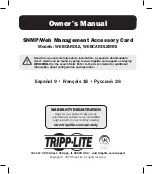
137
Step Command
Remarks
parameters.
block-size
[
extended-block-number
extended-block-number
]
exists.
The configuration takes effect only on
PAT translation mode.
6.
Return to system view.
quit
N/A
7.
Enter interface view.
interface
interface-type
interface-number
N/A
8.
Configure DS-Lite
NAT444.
nat outbound ds-lite-b4
{
ipv6-acl-number
|
name
ipv6-acl-name
}
address-group
group-number
By default, DS-Lite NAT444 is not
configured.
9.
Return to system view.
quit
N/A
10.
(Optional.) Configure a
PAT mapping mode.
nat mapping-behavior
endpoint-independent
[
acl
{
acl-number
|
name
acl-name
}
]
The default mapping mode is
Address
and Port-Dependent Mapping
.
Configuring NAT with DNS mapping
NAT with DNS mapping must operate together with NAT Server and NAT with ALG.
To configure NAT with DNS mapping:
Step Command
Remarks
1.
Enter system view.
system-view
N/A
2.
Configure a DNS
mapping for NAT.
nat dns-map domain
domain-name
protocol
pro-type
{
interface
interface-type
interface-number
|
ip
global-ip
}
port
global-port
By default, no DNS mapping for NAT
exists.
You can configure multiple DNS
mappings for NAT.
Configuring NAT hairpin
Configure NAT hairpin on the interface connected to the internal network. NAT hairpin supports P2P
mode and C/S mode.
•
To configure the P2P mode, you must configure outbound PAT on the interface connected to the
external network and enable the EIM mapping mode. Internal hosts first register their public
addresses to an external server. Then, the hosts communicate with each other by using the
registered IP addresses.
•
In C/S mode, the destination IP address of the packet going to the internal server is translated
by matching the NAT Server configuration. The source IP address is translated by matching the
outbound dynamic or static NAT entries.
NAT hairpin typically operates with NAT Server, outbound dynamic NAT, or outbound static NAT.
They must be configured on interfaces of the same interface card. Otherwise, NAT hairpin cannot
function correctly.
To configure NAT hairpin:
Step Command
Remarks
1.
Enter system view.
system-view
N/A
















































